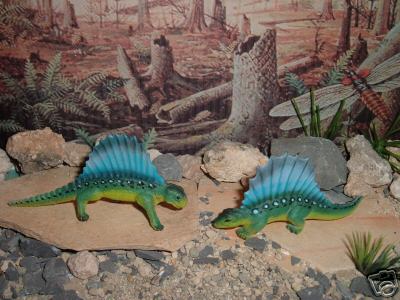
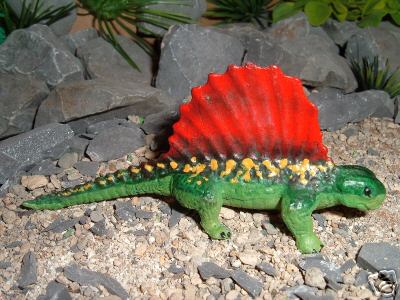
From the Dinosaur Collector
The Early Permian fauna was tied to the wetter equatorial region. Amphibians remain common. The Permian is the last phase of the Paleozoic and plant life is very different. Tree ferns, the relatives of Cattails and Club Mosses characterize flora the period most died out leaving no living representatives. Ferns are present but they are not closely connected to any modern families. The dry highlands away from the swamps is where future of both the animal and plant life is evolving. updated 070906
Paleozoic Diorama
Dimetrodon was wide spread and and represents a significant portion of the fauna in most environments. Since the proportion of population is so high it seems unlikely to have been warm blooded. In modern warm blooded populations predators represent 3 - 5% of fauna where as Dimetrodon represents 40 - 50% of most faunas much as you would expect to see in a cold blooded fauna. There has been a great deal of speculation that the sail could have served as a means of regulating temperature. That it developed as a display device seems to be a simpler explanation since so many of its relatives lacked a sail and seem to have done very well.


Tim Mee original and smooth Dimetrodon custom painted by Fred R. Hinojosa. Recast Marx Dimetrodon custom painted by Fred R. Hinojosa.
Williams Ranch Texas was a dry floodplain in the Permian. ?Dimetrodon's prey was the plant eater Diadectes. ?Diadectes was either an advanced amphibian or an early reptile. Land based plant eaters really haven't gotten established yet. Dimetrodon clearly dominates the fossil record here.? It was long thought that reptiles evolved from amphibians, but it was hard to come up with actual evidence. A transitional fossil species called Seymoria was discovered, and this is actually one of the best transitional fossils on record. It has mixtures between amphibians and reptiles so complete, it is very difficult to classify as one or the other.
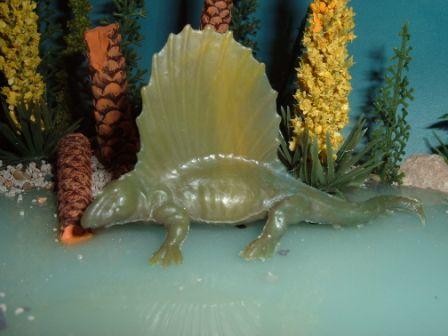
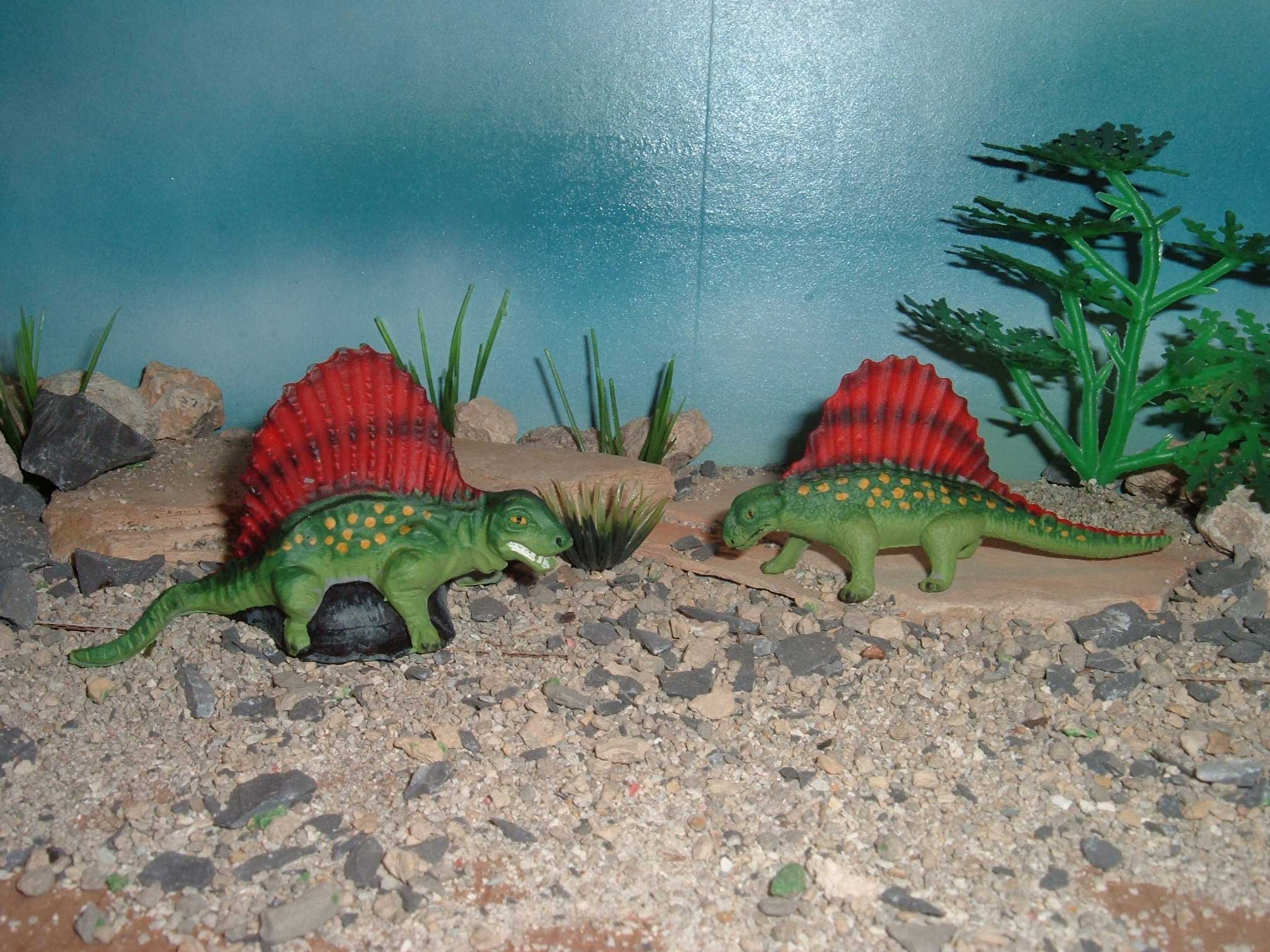
Linde Dimetrodon and photo from Fred R. Hinojosa. Ajax recast and recast Marx Dimetrodon custom painted by Fred R. Hinojosa.
Dimetrodon grandis is the largest and best known of the Dimetrodons. Sphenacodon ferox was somewhat smaller and apparently more common Varanosaurus was another pelycosaur relative without a sail and would have looked superficially like a modern monitor lizard.

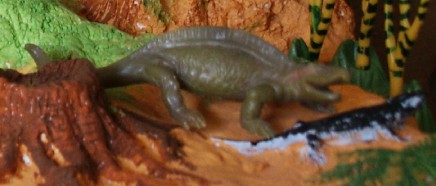
Dimetrodon from the discontinued Carnegie Safari and Marx Sphenacodon custom painted by Fred R. Hinojosa. Linde Sphenacodon premium originally from an Austrian coffee company. Varanosaurus courtesy of Alchemy works.
Sphenacodon ferocior was about 225 cm. long and is thought to have weighed 129 kg. A close relative of Dimetrodon it is thought to have lived in the forested areas where a sail would have been awkward. It had long vertebrae but no fin.
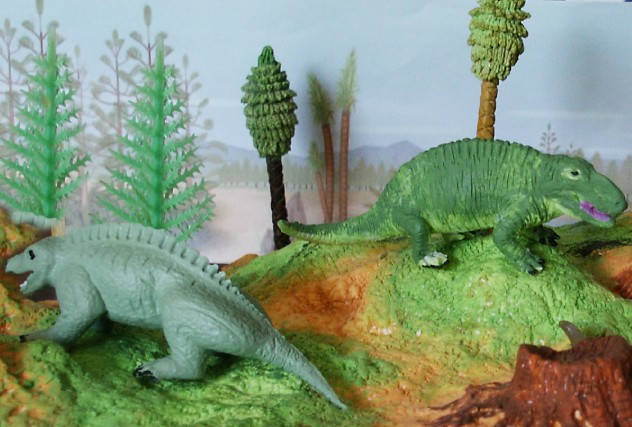
Left is a Marx Sphenacodon with high lights added. Right is a resin figure from Zallinger Diorama model donated by Mike Evan. Sphenacodon doesn't show up often in contemporary play sets.
click on this link for more about Dimetrodon and Permian Amphibians
return to Paleozoic menu
Click on the Site A icon left for more diorama listed by location Click on the Site A icon to the right for Dioramas organized by period or by manufacturer.